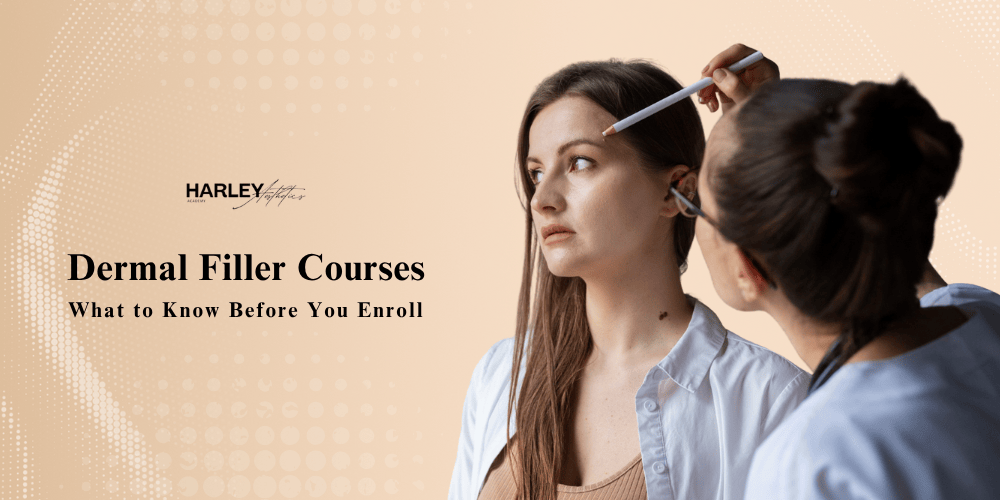July 2025 Sale – 40% Off Get Offers

If you’ve been curious about how to break into the thriving world of non-surgical cosmetic treatments, chances are you’ve already come across terms like aesthetic courses or something like foundation dermal filler course. Maybe you’re a healthcare professional looking to diversify, or perhaps you’re entirely new to the field but fascinated by the idea of helping people feel more confident through subtle, artful changes.
Either way, enrolling in dermal filler courses for beginners can be your first real step into this ever-growing industry. But with so much information online and countless providers offering training, how do you know where to start?
In this blog, we’ll break things down in a real, honest, and conversational way not just to promote a particular school or brand, but to genuinely help you figure out what makes a great course, what questions to ask, what to expect, and whether this career path is truly right for you.
Let’s start with the basics.
Good question, and not everyone knows the full answer.
An aesthetic course is a specialised training programme that teaches you how to perform non-surgical cosmetic procedures, such as:
While some courses cover a broad spectrum, others go deep into one area. If you’re just starting out, you’ll likely be drawn to foundational courses that focus on safe injection techniques, facial anatomy, patient consultation, and legal/ethical practice.
You might be surprised by how varied the backgrounds of students can be. While most providers require a clinical background (nurses, doctors, dentists, etc.), many are increasingly opening up to allied health professionals and those with experience in skincare, beauty therapy, or even anatomy.
What draws people in is usually a combination of personal interest and career opportunity. Some want to upskill. Others are looking for a full-on career pivot. Many are intrigued by the growing demand for non-invasive treatments and want to become part of a booming industry.
That said, it’s not just about liking beauty or being good with people (although those help). A deep respect for clinical safety, a steady hand, and a keen eye for facial anatomy are all important.
Let’s now zoom in on dermal filler courses what do they really offer?
At their core, these courses are designed to teach you how to safely and effectively administer hyaluronic acid-based fillers to restore volume, smooth lines, and contour facial features. But there’s a lot more to it than just injecting.
Expect to learn:
Most dermal filler courses for beginners combine theoretical lectures with live model practice – a crucial element for building confidence. You should never feel rushed through practical sessions. Good training takes time, feedback, and repetition.
This is one of the most common questions.
In the UK, many aesthetic course providers now accept:
However, if you don’t hold a clinical qualification, don’t lose hope. Some providers also offer pathway options or work with you to meet eligibility standards. Just be cautious of anyone who claims you can legally practise aesthetics in the UK with no background, no regulation, and no safeguards – it’s simply not safe, or true.

Not all courses are created equal, unfortunately. So what should you look out for?
Make sure the course is CPD accredited and recognised by insurers. Without proper accreditation, you may not be able to get insured to practise a dealbreaker.
Are the trainers still active practitioners? Do they have medical backgrounds? Can they answer difficult clinical questions on the spot?
You want attention, guidance, and feedback. A course with too many students can mean minimal hands-on practice.
There’s no substitute for real, live model experience. You need to feel the injection, see the tissue response, and manage the patient in real-time.
Does the course offer mentorship, refresher options, or business support after you qualify? You won’t be confident overnight, ongoing support makes a huge difference.
Let’s bust a few myths that many beginners still believe before enrolling in aesthetic courses, especially when it comes to dermal filler courses.
Absolutely not. While the physical act of injecting is only part of the job, aesthetic injectables require clinical precision, medical knowledge, and good judgement. This isn’t just beauty therapy, it’s medical aesthetics.
A qualified practitioner needs to assess vascular pathways, anticipate complications like vascular occlusion, and manage adverse reactions confidently. This is why proper training matters, and why it’s best delivered by experienced, medical educators.
It’s true that aesthetics can be a profitable career, but it doesn’t happen overnight. Building a client base takes time. You’ll need to invest in equipment, marketing, insurance, ongoing CPD training, and likely rent for clinical space.
The best dermal filler courses for beginners teach more than just technique; they’ll prepare you for realistic outcomes, give you marketing and business fundamentals, and help manage your expectations.
The world of aesthetics is always evolving. New products, advanced techniques, and updated regulations mean that you need to keep learning. Think of your first foundation course as just that, the foundation. Continued development is key if you want to stand out and stay safe.
This is where the real journey begins and many new injectors feel both excited and overwhelmed at this point. Once you’ve successfully completed a foundation dermal fillers course, what’s next?
The moment you’re certified, make insurance your top priority. No insurance = no practising. Your training provider should be able to recommend reputable insurers who recognise the course you’ve taken.
Start slow. Treat friends, family, or discounted clients to build up your before-and-after photos and develop confidence. Document everything. Clear case studies will be useful as you grow.
This could be a home-based treatment room (if compliant), a rented space, or a collaboration with an existing clinic. Make sure you’re adhering to all CQC, infection control, and record-keeping standards.
Once you’re confident with the basics, consider advancing your skills. Jawline contouring, tear trough filler, non-surgical rhinoplasty, these are not areas to attempt without extra training.
Short answer: yes – but with a caveat.
Non-surgical cosmetic treatments are not a fad. In fact, demand has surged in recent years across the UK, especially among millennials and Gen Z. The idea of subtle, preventative treatments has grown more socially accepted, and clients are becoming savvier about results.
However, the industry is becoming increasingly competitive. This means:
The beauty of choosing to train through a strong foundation dermal fillers course is that it provides you with a springboard into an industry full of potential – whether you want to work independently, join a clinic, or even teach others later down the line.
This is one of the biggest steps you’ll take in your aesthetics journey. When choosing the right training, consider whether the course:
There are plenty of options out there, but if you’re looking for a trusted UK-based provider offering a well-structured Foundation Dermal Fillers Course, this one has proven to be a strong starting point for many.
Here are some questions we’ve heard repeated from curious souls:
Absolutely, but it’s important to be realistic. One course can qualify you to begin offering treatments, but success comes from ongoing education, marketing, and client retention.
Most foundation courses are 1–2 days, but some offer additional shadowing or extended support. It’s worth considering quality over speed and the best programmes won’t rush your learning.
Some theory-based elements can be taught online, but practical aesthetic training, especially for injectables, should always be in-person with live models.
This varies by location, experience, and how well you market yourself. New injectors might charge £150–£300 per treatment. With 5–10 clients per week, it adds up quickly, but don’t forget costs like products, rent, and insurance.
That’s perfectly normal. A good trainer will ease you in gradually, ensuring you feel ready before ever picking up a syringe. Confidence builds with experience and proper supervision.

If you’ve made it this far, you’re clearly curious; and curiosity is a great start. Whether you’re a nurse ready to expand your skill set, or simply fascinated by the aesthetics industry and want to learn more, there’s never been a better time to begin exploring.
The UK’s aesthetics scene is vibrant, fast-moving, and full of opportunity, and with the right training, it’s an industry that welcomes professionals who value precision, beauty, and care.
If you’re serious about getting started, you’ll want to explore the right aesthetic courses that combine medical knowledge with hands-on training. A trusted starting point can be found here. And for those looking specifically for a high-quality Foundation Dermal Fillers Course, this is where your practical journey could begin.
The industry may be competitive, but with the right foundation, support, and continued learning, you’re setting yourself up for a fulfilling and future-proof career.
© Harley Aesthetics Copyright 2025. All Rights Reserved.